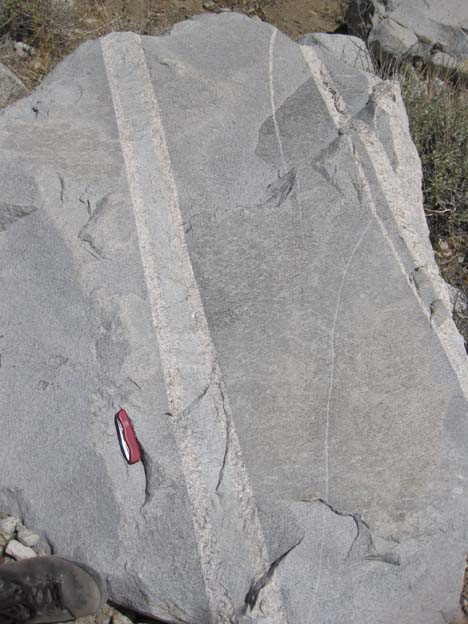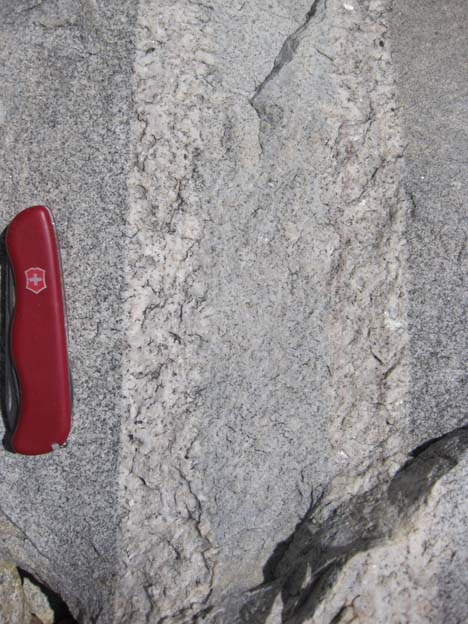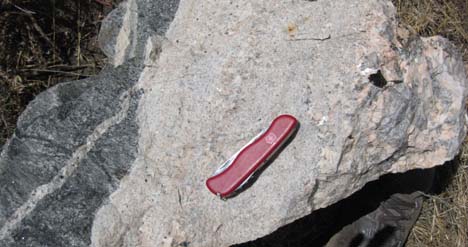Last September, at the location of the faulted moraine (eastern Sierra Nevada, California), I took some photos of some of the sexier plutonic contacts exposed in big boulders (erratics) of the glacial till composing the moraine. Check them out. What do you see here?




The first two look like an aplite concordantly intruding a granite dike in a still older granite… possibly a reactivated fault? In the third I can’t resolve much detail, but I’ll take a WAG and say stoping of more mafic wall rock into a granitic magma.
The thing I was struck by with the last one was the pegmatitic texture on the far right. But yeah, you’re right — some intrusive relations going on on the far left of #3, too.
My take on the second picture is that it looks like the grain size along the edges of the dike are larger, getting finer grained towards the center. An indication of slow cooling along the edges and a more rapid, final cooling in the middle.
Jim: Right — I mean, that grain size implies that story to me, too — but that also kind of doesn’t make sense, right? Why would the edges lose heat slowly, but the middle lose heat rapidly — that’s a hard situation to imagine… So I’m flummoxed.
If we take the first two as a single intrusion- and I don’t think we need to do that- crystallization is not necessarily just a result of heat loss. Volatiles, water particularly, play a big role in crystallization temperature and crystallization morphology. A sudden release of volatiles can effectively “quench” a melt.
I agree with lockwooddewitt. The position of the solidus for any composition depends on volatile concentration in the system. For a “simple” granitic composition, as this case seems to represent, reduction in the total volatile pressure in the system (not only by release of volatiles; it can be the result of volatile consuption when micas and other hydrous minerals in the margins of the dyke form) can effectively “quench” the melt.
Regarding the third picture, I need a clearer picture to make an opinion.
Awesome. Thanks Enrique and Lockwood, for explaining that.
Oh — and here’s a bigger version of the last photo.
Much better now, Callan. The block in the picture has two different parts: the dark grey rock in the left seems to be the host of the aplite-pegmatite dyke in the right (you can even see a small dikelet injected from the aplite). I would need to take a closer look to that grey rock but it looks like a metamorphic rock or even a mylonite. The dyke is a quite typical aplite with pegmatitic lenses inside. To me, in this case the granitic melt was not water saturated and started crystallizing medium grained, equant crystals of quartz and alkali feldspars. The residual melt enriched progresively in volatiles allowing for enhanced diffusion and crystal growth in small lenses and in the central, coarse grained pegmatitic zone. I bet the black mineral in the right is tourmaline, quite typical in these cases.